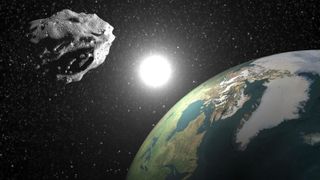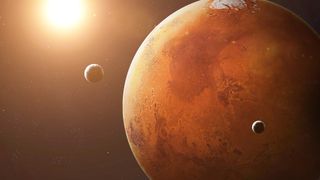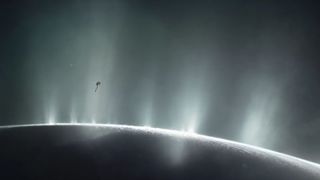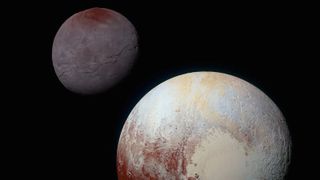If you look on a clear day, the brightest and largest object in the sky will probably be the moon. And unless you have a decent telescope, it is the only natural satellite you can see with your own eyes. As a result, most people have a misperception of what a moon is and how common these natural satellites really are.
In reality, there are hundreds, if not thousands, of natural satellites in our cosmic neighborhood, ranging from irregular space rocks the size of a city to massive, rounded bodies that are potentially large enough to be considered planets. full part.
So exactly how many solar system moons have we found? It turns out the answer depends on your definition of a moon.
The International Astronomical Union (IAU) officially recognizes 288 planetary moons orbiting the eight worlds of the solar system, according to NASA. But there are also 473 other “small satellites” — the moons of asteroids and dwarf planets — listed by NASA. Jet Propulsion LaboratoryIf we count both types, as most astronomers would, that brings the total number of natural satellites in the solar system to 761 (as of June 2024).
But this is probably just the “tip of the iceberg”. Edward Ashtonastronomer at Taiwan’s Academia Sinica Institute of Astronomy and Astrophysics, told Live Science in an email. Astronomers have discovered dozens of new planetary moons and small satellites in the past few years alone, and technological advances will likely accelerate the speed at which they can spot more in the years to come, he added.
What is a moon?
“The simplest definition (of a moon) would be an object that is in orbit around a larger, non-stellar object,” Ashton told Live Science. “But that’s not quite the complete answer. »
For example, there are currently Thousands of man-made satellites orbiting Earth that meet the above definition but are not considered moons because they are not natural. These spacecraft also have a limited lifespan before fall back to Earth and burn up in our atmosphere.
Some natural satellites, such as quasi-moons and mini-moons, are also temporary and do not actually orbit planets.
Related: Will the Earth one day lose its Moon?

There is also a question of size, Brett Gladmanastronomer at the University of British Columbia in Canada, told Live Science in an email. For example, ring particles — the tiny fragments of rock that make up the rings of planets like Saturn and Uranus — individually orbit their host planet but are not considered moons, Gladman said.
Objects smaller than a few hundred feet, often called “ring moons” or “glasses,” also have “fuzzy definitions” and are not considered true moons, Gladman added.
Even among recognized moons, there are still points of contention. For example, planetary moons can be divided into two groups: regular moons, which are generally larger and have small circular orbits close to the equator of their host planet; and irregular moons, which can be much smaller and have larger, more elliptical orbits around their host planets, Ashton said.
Of the regular moons, about 20 are also considered major moons, meaning they are large enough to have a rounded shape caused by their gravity, according to The Planetary Society.
Planetary moons
Starting with the closest to the sun, the closest neighbors to our star, Mercury And Venus, have no real moons due to their proximity to the giant ball of gas, which would have ripped all the potential moons off the planets a long time ago. Venus has a known quasi-moon, Zoozve, but that doesn’t count because it actually orbits the sun and not Venus.
Let’s continue, we arrive on Earth. OUR the home planet has only one major moon. However, he also has at least seven quasi-moons And occasionally earns extra minimoons for about a year at a time. These lunar impostors don’t count either. However, some scientists think we could use these space rocks as temporary bases for help us become an interplanetary species.
The next step is Marchwhich has two real moons: Phobos And Deimos. Both are only a few kilometers wide and orbit very close to the Red Planet. Phobos is slowly falling toward Mars and is expected to one day crash into the world’s surface — if it is not torn first.

As we move into the giant planets, things start to get more interesting. The first gas giant, Jupiterhas an impressive 95 moons, including four major moons: Callisto, EuropeIo and Ganymedethe largest moon in the solar system. But Saturn has even more: there are at least 146 Saturnian moons, including six major moons, such as Titan, Mime And Enceladus.
The Ice Giants Uranus And Neptune have 28 and 16 moons respectively, and seven major moons between them.
Related: Where does the solar system end?
But these numbers have changed significantly in just the last few years. Since the start of 2023, astronomers including Ashton and Gladman have discovered at least 62 irregular new moons around Saturn And 12 Jovian New Moonsand a pair of Neptunian moons and a single moon around Uranus.

Technological advances may explain the sudden increase in lunar discoveries. More powerful telescopes can spot smaller moons – especially irregular moons – which are abundant around giant planets, Ashton said.
As a result, the number of moons is expected to continue to increase sharply over the next few years. For example, Ashton revealed that he had already discovered other planetary moons but was still waiting for follow-up observations to confirm their existence before submitting them to the IAU.
The number of planetary moons could also increase if we discover more planets in the solar system. One of these worlds is the elusive Planet Nine — a hypothetical giant planet that could be lurking in the outer reaches of the solar system. If such a planet exists, researchers have already hypothesized that it could be surrounded by several moons.
Researchers have also speculated that other distant worlds captured from interstellar space by the gravitational pull of the Sun, known as rogue planetscould also have moons.
Small satellites
NASA’s count of 473 small satellites is even more uncertain than the number of planetary moons, because we are find more asteroids all the time. Some asteroids may also have multiple satellites that are difficult to distinguish one from the otherAshton said.
The IAU also estimates that there could be “more than 100” additional dwarf planets. waiting to be found in the outer solar systemwho could all have moons.

“Just like the satellites of the giant planets, we have yet to discover the vast majority of them,” Ashton said. In total, there will probably be “as many small satellites as there are planetary moons,” he added.
However, other astronomers, such as Gladman, are less sure about the number of small satellites. “So much of the ‘parent’ population (of the host objects) is not yet known that this question is difficult to answer,” he said.
How many moons could there be in total?
There are over 700 known natural satellites in the solar system. However, as we have seen, this number is likely to increase considerably in the future.
Previous studies have shown there could be hundreds, or even thousands, of tiny planetary moons that could be discovered with more powerful telescopes, Gladman said. And as we have already seen, there is great uncertainty about the actual number of small satellites.
But this uncertainty doesn’t stop researchers from making guesses.
“I think there are probably about 10,000 moons in the solar system,” Ashton said.
But there’s no telling how long it will take us to find them all.